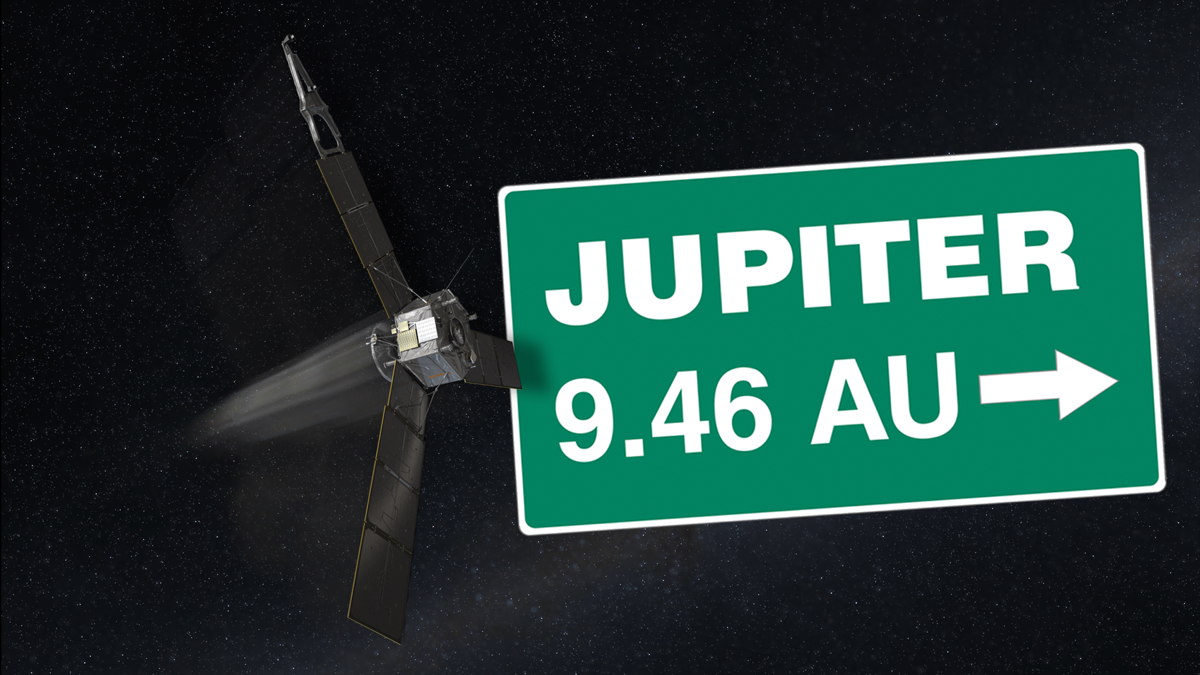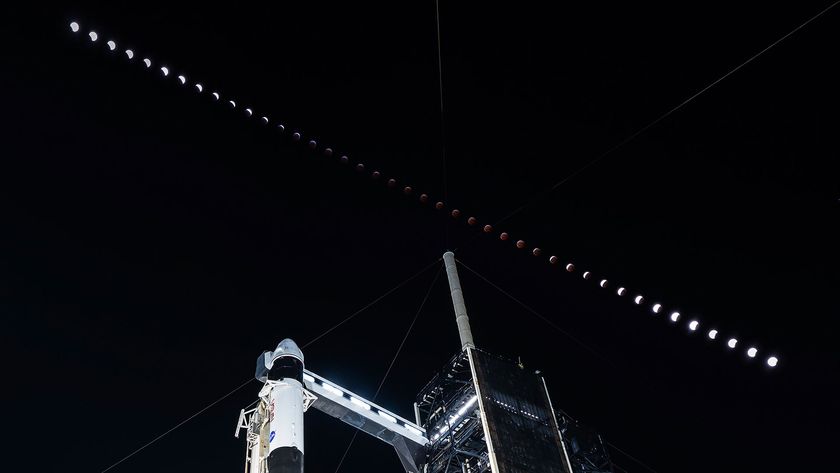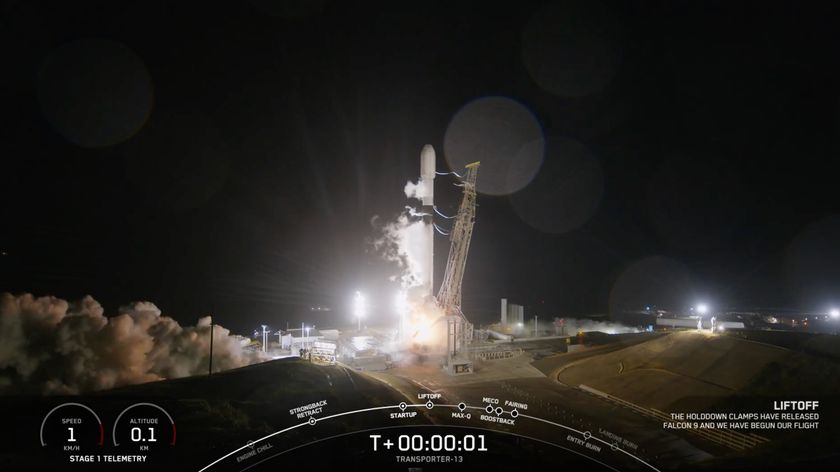
A NASA spacecraft has hit the halfway mark of its five-year voyage to the solar system's largest planet: Jupiter.
The odometer on NASA's Juno probe clicked over to 880 million miles (1.415 billion kilometers) on Monday (Aug. 12), space agency officials said. That means the spacecraft is halfway to Jupiter, at least in terms of distance traveled, they added.
The $1.1 billion Juno mission launched in August 2011 and will arrive at the Jovian system in July 2016. The probe is taking an indirect, looping path to its destination, with a close Earth flyby scheduled two months from now to provide a dramatic speed boost.
"On Oct. 9, Juno will come within 347 miles (559 km) of Earth," Juno project manager Rick Nybakken, of NASA's Jet Propulsion Laboratory in Pasadena, Calif., said in a statement. (Juno was 34.46 million miles, or 55.46 million km, from Earth when the halfway milestone was reached on Monday morning, officials said.)
"The Earth flyby will give Juno a kick in the pants, boosting its velocity by 16,330 mph (26,280 km/h)," Nybakken added. "From there, it's 'Next stop, Jupiter.'"
Once Juno reaches Jupiter, it will circle the planet for a full Earth year, making 33 orbits from pole to pole. The spacecraft will use its eight science instruments to study the gas giant's atmosphere, gravitational field and magnetic field.
Juno's observations should reveal a great deal about Jupiter's origins, structure and composition, including whether or not it possesses a solid core, researchers said.
Get the Space.com Newsletter
Breaking space news, the latest updates on rocket launches, skywatching events and more!
The mission is named after the goddess Juno in Greek and Roman mythology.In the myth, the god Jupiter (or Zeus, in the Greek version) used clouds to hide his acts of mischief, but his wife Juno was able to peer through the veil to see her husband's antics, according to a NASA description.
The 8,000-pound (3,267 kilograms) Juno probe is the first solar-powered spacecraft ever to visit the outer solar system.Juno has three huge solar arrays, each of which is the size of a tractor-trailer.
Follow Mike Wall on Twitter @michaeldwall and Google+. Follow us @Spacedotcom, Facebook or Google+. Originally published on SPACE.com.
Join our Space Forums to keep talking space on the latest missions, night sky and more! And if you have a news tip, correction or comment, let us know at: community@space.com.

Michael Wall is a Senior Space Writer with Space.com and joined the team in 2010. He primarily covers exoplanets, spaceflight and military space, but has been known to dabble in the space art beat. His book about the search for alien life, "Out There," was published on Nov. 13, 2018. Before becoming a science writer, Michael worked as a herpetologist and wildlife biologist. He has a Ph.D. in evolutionary biology from the University of Sydney, Australia, a bachelor's degree from the University of Arizona, and a graduate certificate in science writing from the University of California, Santa Cruz. To find out what his latest project is, you can follow Michael on Twitter.









